 Divide the first term of the dividend by the first term of the divisor, the result will be the first term of the quotient. Divide the first term of the dividend by the first term of the divisor, the result will be the first term of the quotient.  College Algebra - Page 60by James Harrington Boyd - 1901 - 777 pagesFull view College Algebra - Page 60by James Harrington Boyd - 1901 - 777 pagesFull view - About this book
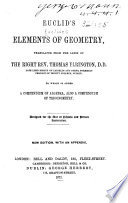 | Euclid - Geometry - 1872 - 284 pages
...the power or index of a, we place them thus, a6d — ate + cPb + a2 ; and then proceed by dividing the first term of the dividend by the first term of the divisor, placing the result in the quotient. "We next multiply the whole divisor by the quotient thus found,... | |
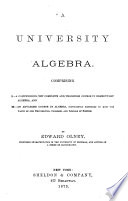 | Edward Olney - Algebra - 1873 - 354 pages
...polynomials. • EULE. — HAVING ARRANGED DIVIDEND AND DIVISOK WITH REFERENCE TO THE SAME LETTER, DIVIDE THE FIRST TERM OF THE DIVIDEND BY THE FIRST TERM OF THE DIVISOR FOR THE FIRST TERM OF THE QUOTIENT. TlIEN SUBTRACT FROM THE DIVIDEND THE PRODUCT OF THE DIVISOR INTO... | |
 | Joseph Ficklin - Algebra - 1874 - 446 pages
...6йг. К ULE. I. Arrange the dividend and divisor according to the powers of some common letter. II. Divide the first term of the dividend by the first term of the divisor ; the result will be the first term of the quotient. Multiply the whole divisor by this term, and subtract... | |
 | Thomas Dalton - 1874 - 236 pages
...24a464c2 Ans. When the divisor consists of more terms than one, the division is performed as follows : — divide the first term of the dividend by the first term of the divisor, placing the result as the first term of the quotient or answer : multiply the whole of the divisor... | |
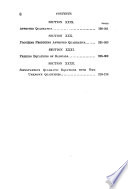 | Edward Olney - Algebra - 1874 - 232 pages
...a*—2ax+x' times 33. RULE.—Having arranged dividend and divisor with reference to the same letter, divide the first term of the dividend by the first term of the divisor for the first term of the quotient. Then subtract from the dividend theproduct of the divisor into... | |
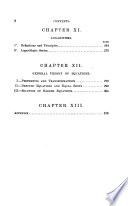 | William Guy Peck - Algebra - 1875 - 348 pages
...treated in the same manner, we have the following rule for the division of polynomials : ' RULE. //. Divide the first term of the dividend by the first term of the divisor, for the first term of the quotient. Multiply the divisor by this term, and subtract the product from... | |
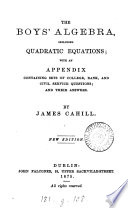 | James Cahill (of Dublin.) - Algebra - 1875 - 230 pages
...highest, or beginning with the highest and going regularly to the lowest, it makes no matter which. (2) Divide the first term of the dividend by the first term of the divisor as in Case I., and put the result in the quotient. (3) Multiply the whole divisor by this first part... | |
 | Horatio Nelson Robinson - Arithmetic - 1875 - 462 pages
...hand of the dividend, as in simple numbers. II. Find the first term of the quotient either by dividing the first term of the dividend by the first term of the divisor, or by dividing the first two terms of the dividend by the first two terms of the divisor ; multiply... | |
 | 1876 - 400 pages
...of the answer are alternately plus and minus. The first term of the answer is obtained by dividing the first term of the dividend by the first term of the divisor ; the last term of the answer may also be obtained by dividing the last term of the dividend by the... | |
 | David Munn - 1876 - 216 pages
...the first term of the quotient; therefore the first term of the quotient will be found by dividing the first term of the dividend by the first term of the divisors. The dividend is equal to the sum of the partial products, which are obtained in multiplying... | |
| |